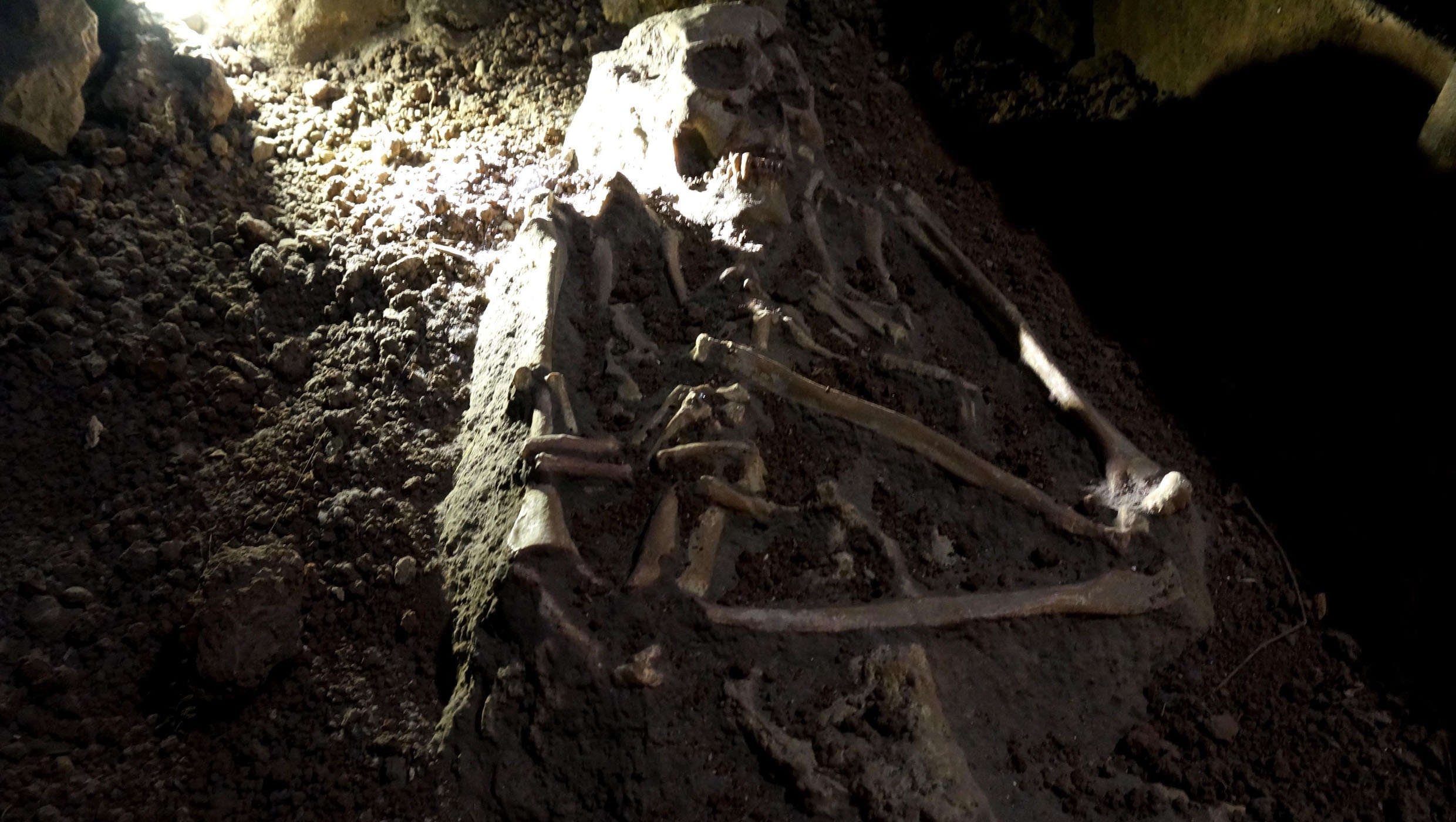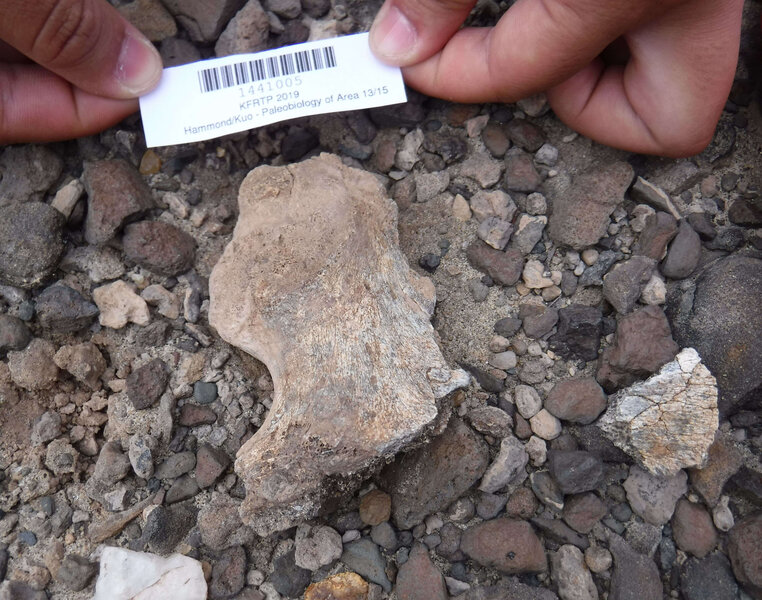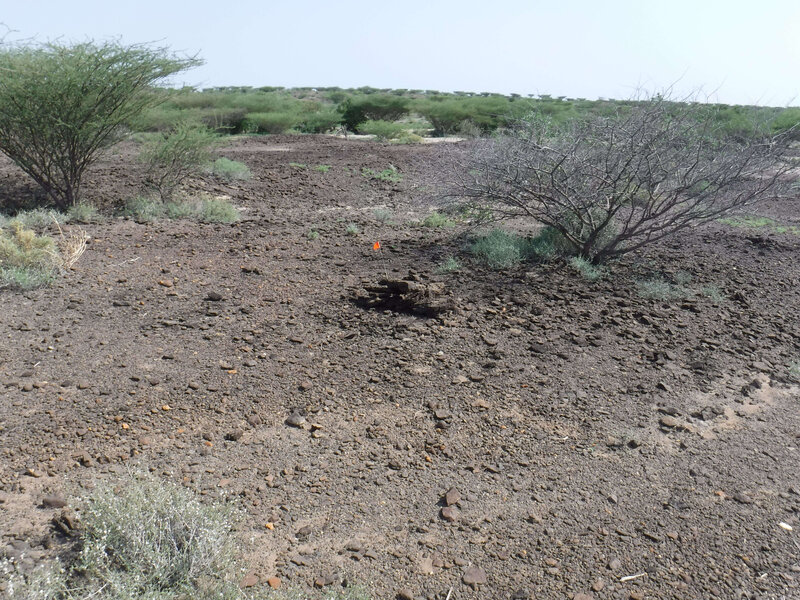Create a free profile to get unlimited access to exclusive videos, sweepstakes, and more!
Our oldest ancestors who started to look human go way back ... like 2 million years back

If we want to trace our most ancient ancestors, we (and all other life on Earth) could rewind all the way to primordial microbes, but the oldest hominid to act human still goes way back.
Homo erectus is the oldest ancestor we have with more human than apelike characteristics. It was not the first hominid to stand up, but it started showing significant brain growth and evidence of tool use that set it apart from Australopithecus and earlier Homo species. But just how old is H. erectus? The answer could be around 2 million. At least that was what paleoanthropologist Ashley Hammond, who recently published a study in Nature Communications, and her team found when they reexamined a prehistoric bone fragment.
“We were unsure exactly where the fossil came from,” Hammond tells SYFY WIRE. “We were quite surprised by where a previous study showed its location because it was not where we were expecting it to be.”
The KM-ER 2598 skull bone was first unearthed near Lake Turkana in East Turkana, Kenya, in 1974, when there was no such thing as GPS. Scientists found a way around that by marking up up aerial photos of archeological sites. East Turkana is approximately the size of New Jersey, so finding where the bone fragment was originally discovered wouldn’t have been possible without a map that showed where fossils had surfaced. Locations where fossils had been found were identified with pinpricks and handwritten fossil numbers. This map showed the way to KM-ER 2598, but not without controversy.
KM-ER 2598 was thought by some to be a much younger specimen when it was first discovered. When fossils show up on the surface, there is always a chance they may have been brought there by wind or water or something else. When a fossil is surrounded by rocks that have been dated to a certain age, it is often assumed that the piece of bone is around the same age. With KM-ER 2598, it didn’t help that most known H. erectus fossils were from several hundred thousand years later. The rock formation where this fragment was first picked up also predated any species of Homo.
Inconsistencies between the fossil and where it was supposedly from led Hammond and her team to find a more likely location that was still relatively close. There was still a problem. Rock deposits in the new location were radiometrically dated to about 1.88-1.9 million years old. After extensive testing to make sure that there was no evidence of younger rocks on KM-ER 2598, Hammond concluded that it must have come from these older deposits, meaning it really is 2 million years old. That wasn’t the only thing that surprised them. Foot and pelvis fossils that might have been from the same H. erectus individual also appeared.
“It is likely that they are the same individual since they were found so close together, but we cannot prove this,” Hammond says. “If researchers are able to find additional footbones or pelvic material from early Homo erectus, this would allow critical comparisons of the anatomy that might strengthen our claim.”
If these bones really are from the same individual or even another individual of the same species that is as old as the rocks surrounding KM-ER 2598, it could mean that the oldest postcranial (anything below the head) fossils from H. erectus have been found. These fossils are even older than the 1.7-million-year-old H. erectus bones found in Dmanisi, Georgia. However, it is unlikely that this can be proven anytime soon. DNA degrades fast, and any genetic material that might have been in the fossils has long since disintegrated.
Even if they were not from Homo erectus, what could be inferred from the fossils was that they had a more human than apelike morphology, and were almost definitely from some Homo species. Postcranial bones from other hominid species in East Turkana might eventually give away what belonged to whom. These fossils are of comparable age and could have belonged to Homo habilis, Homo rudolfensis, or Paranthropus boisei. Whether these species crossed paths with each other and with H. erectus is still unknown, but Hammond wants to find out.
“Homo erectus was around for almost 2 million years and lived alongside several other hominid species at different periods of time,” she says. “East Turkana is one place where we find multiple hominid species overlapping, so this field location has the potential to provide more information about how these species coexisted sympatrically. I’d love to know more about how Homo erectus interacted with other hominids.”




























